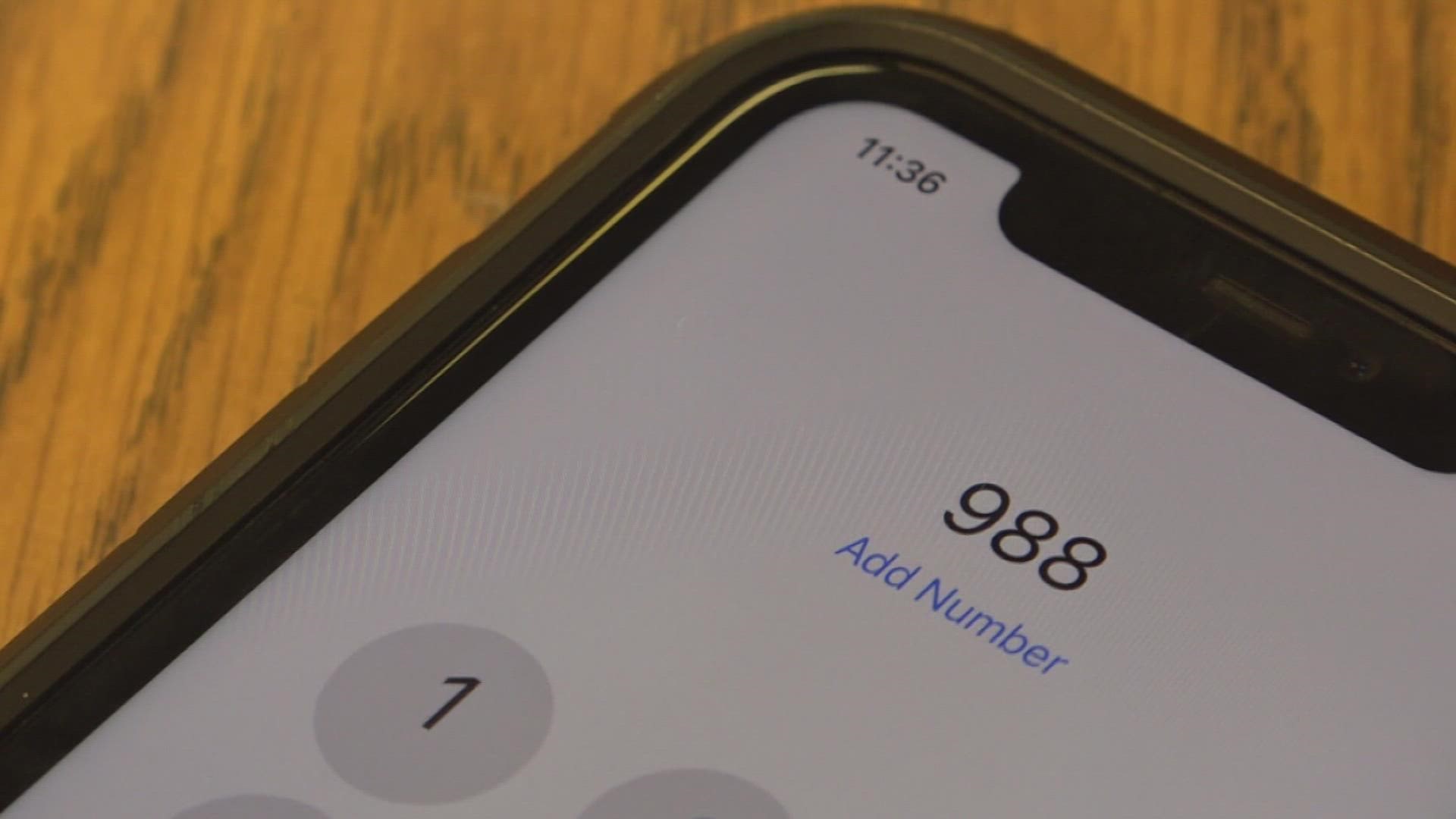ST. LOUIS — Monday is World Mental Health Day: a day dedicated to education, awareness and advocacy.
Just this summer, the National Suicide Prevention Lifeline launched 988 for people in need of help.
The three-digit code was activated in mid-July and it's only gotten busier.
In the state of Missouri, six agencies handle every call.
Two of those agencies are Compass Health Network and Behavioral Health Response, known as BHR.
BHR handles the Eastern Region of Missouri, which covers St. Louis, St. Louis County, Jefferson County, Iron County, Washington County and St. Francois County while Compass Health Network provides service to 25 counties within the state including St. Charles County.
Lauren Moyer, the executive vice president of clinical innovation at Compass Health Network, is also the state’s 988 task force chair.
"Across the state, we had a 50% increase in our call volume," she said. "Now, that has really kind of stayed the course with that 50% increase in call volume."
In the first month, agencies saw the initial bump as people were testing out the line and wondering how it worked.
But the numbers remain high, and Moyer said patterns have emerged.
"We have had a lot more severity of callers," Moyer said.
Dr. Bart Andrews is BHR's chief clinical officer. He said these are highly acute calls.
"To give you a comparison on the local crisis line, 10% of callers are in a suicide crisis. But on the Lifeline, we hit 30-40% of suicide crisis calls," he said.
Dr. Andrews said this could be happening because wait lists to see a health professional, even with private insurance, can be as long as eight to 12 weeks.
Moyer also said there are new callers due to an increase in anxiety and depression, especially among youth and adolescents.
However, there are some positives.
"A lot of our calls actually can be managed in the moment over the phone," Moyer said. "Sending out to hospitals or engaging police has actually gone down, even though our crisis volume of calls has gone up."
The state of Missouri has already surpassed its answer rate goal of 90%, which they hoped to reach by next July. As of this month, the state was already answering 92% of calls.
"We are held accountable to make sure that we have an average speed to answer to manage that call," Moyer said. "Not put it on hold, but actually manage and talk with the person and de-escalate whatever situation they might be struggling with."
The push is it get as close to 100%, but agencies know in the meantime, each call can be life-saving.
"If you're struggling right now and if you need to talk, call 988," Dr. Andrews says.
What's next
Moyer said that while 90% of calls are dealt with in the moment, it's the follow-up that's crucial.
There is a specialized team designated to do outbound calls.
There is a follow-up call usually the next day.
The acceptance rate for those calls is around 80-90%.
She also said they are working on the remaining 10% of calls that aren't immediately resolved.
"We are highly focused on making sure throughout our state that we implement a robust mobile crisis response," Moyer said. "So that 10%, professionals are going to the home of the caller for a safety plan or police could reach out to us."
She said the goal is to roll out an enhanced mobile crisis response throughout the entire state this month.
Dr. Andrews also said funding should start rolling in to hire more clinicians and the support needed for that, such as technology.
He said BHR is hiring and they are in need of clinicians.
"You don’t need a master’s or bachelor’s," he said. "Four years total experience in behavioral health is what's needed."
Click here for career opportunities at BHR.

